Israel and Palestine: more divided than ever
Daniel Ben-Ami reports from the Holy Land on the key achievement of the so-called peace process: the intensified partitioning of Arabs and Jews.

Want unlimited, ad-free access? Become a spiked supporter.
The bustling square at the bottom of Jerusalem’s Neviim Street reveals subtle hints at the transformation of the Israel-Palestinian conflict over the past two decades.
To the tourist, the square no doubt simply looks like a lively Arab market and car park in a particularly exotic location. Straight ahead is the Damascus gate of the walled old city of Jerusalem. The street itself consists mainly of fruit and vegetable vendors, taxis, a car park and tracks for the new Jerusalem light rail which is due to open soon. Walk up the street, crossing a main road, and you immediately enter Jewish west Jerusalem. Turn right after you have done so and you are in the ultra-orthodox area of Mea Shearim.
But visiting the city for the first time since 1992, I am more struck by what is not there. Virtually all the car number plates are yellow: the green and silver ones have gone. This is hugely significant. Yellow number plates indicate Israeli cars (including those owned by Palestinians with Israeli citizenship). Green ones signify West Bank Palestinians, while cars registered in the Gaza Strip have silver number plates.
Evidently cars from the West Bank and Gaza are, except in exceptional circumstances, no longer allowed into Israel. Despite the small distances involved, it is not possible for someone from, say, Ramallah, just 15km north of Jerusalem, or Bethlehem, about 9km south, to drive into the city. Entrance is blocked by the huge concrete security wall that now cuts through the West Bank. The Gaza Strip is less than a two-hour drive away yet its inhabitants cannot travel to Jerusalem. Palestinians can only travel from the occupied territories to Israel with special permission under exceptional circumstances.
Admittedly, in the past any Palestinian-registered cars travelling from the West Bank or Gaza were likely to face harassment at Israeli military checkpoints. But at least it was generally possible to travel from both places to Jerusalem. Nowadays, Palestinian vehicles apparently stand no chance of passing through the formidable barriers that surround both territories.
Another change to Neviim Street is that Palestinian day labourers from the West Bank are no longer allowed to vie for work inside Israel. Early in the morning the square used to be full of Palestinian men seeking casual work in Israeli factories and other businesses. Israeli employers would pull up in cars and trucks to select the men they wanted. There were similar scenes at Erez junction just north of the Gaza Strip. Yet after the first Palestinian intifada (uprising) of 1987-1998, Palestinians were banned from entering Israel for such work.
Naturally such casual work was demeaning and poorly paid. It was also forbidden for such labourers to stay overnight in Israel. But it was nevertheless a vital source of income for those living in the occupied territories. Its removal has hit living standards hard.
Today, there is the bizarre spectre of immigrants from all over the Third World doing Israel’s menial work, while Palestinians from a short distance away are banned. Filipino women look after the Israeli elderly and Sudanese men wash up in Israeli restaurants, but Palestinians from, say, Nablus or Hebron cannot enter.
Overall, the image at the bottom of Neviim Street suggests that over the past 20 years, in the period of the ‘peace process’, the near impossible has been achieved: Israelis and Palestinians are in many respects even more segregated than before. They may live side by side, but contact between them is minimal.
The deepening of the divide between Israelis and Palestinians is only one aspect of the transformation of the conflict. For those who care to look there are many signs to show how it has fundamentally changed. The outlook of each of the parties involved – Israel, the Palestinians and the West – has changed beyond recognition. Yet few observers seem interested in discussing the significance of this shift.
Worst of all are the self-proclaimed radicals who have turned condemnation of Israel into a ritual act. For them, ostentatious anti-Israeli gestures, particularly in the form of calls for boycotts and disinvestment, are central to their identity. Yet they fail to see beyond caricatures of evil Israeli war criminals and pathetic Palestinian victims. Indeed, they even avoid asking whether the actions they pursue benefit the Palestinians – the supposed objects of their sympathy.
To understand the transformation of the region over the past two decades it is necessary to look at each party in turn. Only then is it possible to get a full understanding of the current state of the area.
Israel: the transition to post-Zionism
The first striking feature of the past 20 years or so is that most of Israeli society has largely given up on the traditional Zionist project. It no longer believes in the idea of the muscular New Hebrew who will bring the whole of the historic Land of Israel (Eretz Yisrael) under the control of the Jewish state (Medinat Yisreael). Instead there exists a peculiar amalgam consisting of a particularly heavy emphasis on victimhood combined with everyday consumerism.
It is important to recognise that the obsession with victimhood is relatively new. The traditional Zionist project, before the founding of the state in 1948 until the 1970s, was premised on the idea that Jews should no longer be victims. Instead they should model themselves on the European settlers who were colonising various territories within their respective national empires. In contrast to the passive Jews of the Eastern European shtetl, the idea was to create tanned, tough New Hebrews who would settle the land. Those who suffered in the Holocaust were often viewed with derision for their failure to fight.
The recent shift towards the embracing of victimhood was reflected in the opening of a new version of the national Holocaust museum in 2005. As Nathalie Rothschild noted on spiked shortly afterwards:
‘Yad Vashem, the Holocaust Martyrs’ and Heroes’ Remembrance Authority, was established in 1953 by an act of the Israeli Knesset. Where the old museum had a stronger focus on Jewish resistance in the Warsaw ghetto, the uprisings in Sobibor and Treblinka extermination camps, and the struggle of survivors to get to Palestine, the new museum presents personal accounts of the Holocaust.’
Defamation, a 2009 documentary on anti-Semitism by Israeli director Yoav Shamir, illustrates the same trend. It shows how in recent years thousands of Israeli high school students have gone on organised trips to Auschwitz shortly before being inducted into compulsory military service.
Meanwhile, on the streets of most Israeli towns, people are typically much more concerned with everyday living than the project of nationhood. Tel Aviv, which in 2009 celebrated the centenary of its creation by early Zionist settlers, is nowadays much like many other Mediterranean coastal towns. There is little passion for further nation-building, and the conflict with the Palestinians seems far away even though, in geographical terms, the occupied territories are close.
In practical policy terms, the retreat from Zionism has expressed itself in Israel’s willingness to withdraw its troops and settlers from most Palestinian population centres. As part of the peace process it withdrew its forces from the day-to-day occupation of most Palestinian towns on the West Bank. In 2005, Israel unilaterally disengaged from the Gaza Strip and recently, in breach of a long-term taboo among Israeli leaders, it has even hinted at ceding Palestinian areas of greater Jerusalem. These moves are all the more striking in that they have often been carried out under the leadership of political hawks who were previously strong supporters of expansion.
To be sure, such moves have not brought real freedom for the Palestinians. The Gaza Strip, for instance, is surrounded on two sides by the Israeli army while the navy patrols its coast. Israel’s air force dominates the sky and the final border is tightly controlled by Egypt. Those in the West Bank find themselves not in a unified area but a territory sub-divided into a patchwork of small plots between which travel is often difficult. Yet this should not detract from the fact that the withdrawal from the territories marked an important shift away from the traditional goals of Zionism.
The main Israeli opposition to territorial compromise is the national religious community. This does not consist of the black-garbed, ultra-orthodox haredim, many of whom are indifferent or even hostile to Zionism. Instead it represents the perhaps 15 per cent of Israeli society that seeks to combine political Zionism with orthodox Judaism. It is this section of the population – which it should be emphasised is a small proportion of the whole – that forms the core of the settler movement. The religious Zionists have for many years fought a losing battle against the trend for Israel to retreat from the traditional goal of territorial expansion.
Perhaps the most graphic illustration of the schism between the Israeli majority and the religious-Zionist rump can be seen in the Israel Defense Forces (IDF). For many years the people’s army was at the centre of the Zionist project of nation-building. Its officer corps consisted mainly of kibbutzniks (members of Israeli collective settlements) and leftist, secular Israelis. Not that the IDF of old was in any way humane. On the contrary, it was responsible for the creation of the state in 1948, with the consequent expulsion of hundreds of thousands of Palestinians, and the conquest of the West Bank and Gaza in 1967.
The contemporary Israeli army is fundamentally different. Religious Zionists have largely replaced old-fashioned leftists in the officer corps. As a study in Haaretz, a liberal Israeli newspaper, noted:
‘Only three residents of Tel Aviv… currently serve as company commanders, though the first Hebrew city has more than 400,000 residents. Yet the West Bank community of Bruchin, with fewer than 600 residents, is home to six company commanders, and the West Bank town of Eli, with some 2,000 residents, is home to five.’
The virtual disintegration of the Israeli Labour party (formerly Mapai) earlier this month was another milestone in the demise of Zionism. Ehud Barak – the Labour leader, defence minister and former prime minister – announced his decision to leave the party along with four other members of parliament to form a new organisation. He said he had left the party because it had ‘shifted toward the left and post-Zionism’. Labour was reduced to a rump of eight members in Israel’s 120-seat Knesset (parliament) as a result of the defections.
In effect this move marked the end of the key force in creating the state of Israel and governing it during its early decades. From before the founding of the state until the election of 1977 it was the dominant grouping in Israeli politics. Seven of Israel’s 12 prime ministers were members of the Labour party. Although the party still exists in name, it no longer represents the core values of traditional Zionism. Indeed, the vast majority of Israeli politicians find it difficult to articulate exactly what they stand for nowadays.
Israel’s critics have failed to recognise that Zionism faces an existential threat. That threat comes not from the Arab armies or the Palestinians, and certainly not from the international boycott movement. Instead, it is the fact that the bulk of Israeli society has gone a long way towards losing faith in its traditional project that signals that post-Zionism is superseding Zionism.
The Palestinians: the end of liberation
The transformation of Palestinian society since the 1980s is even more dramatic than that of Israel. To put it with brutal frankness: the Palestinian liberation struggle is dead. Palestinians are no longer at the forefront of a struggle to resist Western interference in the Middle East. On the contrary, the Palestinian leadership is nowadays probably more fervently pro-intervention than anyone else.
To understand this shift it is once again instructive to contrast the present situation with earlier phases of history. The distinct fight for Palestinian freedom was at its zenith from the 1960s to the 1980s. During that period it embodied the popular aspiration in the region to resist foreign encroachment. Across the Middle East the Palestinians were widely seen as not only resisting Israel but as opposing Zionism as an expression of Western interference in the region.
In many respects, this distinct phase of Palestinian resistance represented a narrowing of broader Arab aspirations. In the immediate post-colonial period that followed the Second World War there was widespread support for pan-Arabism: a movement which favoured Arab unity while rejecting the artificial borders imposed by the retreating Western powers. However, with the Six Day War of 1967, when Israel famously defeated the surrounding Arab armies in less than a week, pan-Arabism was widely discredited. It was under these circumstances that the Palestinians became the focus for wider Arab aspirations.
However, the situation changed fundamentally in 1988 when the Palestine Liberation Organisation (PLO) for the first time recognised the state of Israel. This recognition was confirmed in 1993 in a letter from Yasser Arafat, then the PLO leader, to Yitzhak Rabin, the then Israeli prime minister. Such recognition most obviously represents the acceptance of a two-state solution: the division of the land between Israel and the Palestinians. But it also meant the surrender of any remaining PLO claim to be a radical anti-Western force. For the Palestinian leadership, the way forward lay unambiguously with getting the West to force Israel to make concessions. There was no longer any conception of a popular struggle for Palestinian freedom.
Of course it is difficult to blame the Palestinian leadership for being conciliatory. It was not only up against Israel but it also faced considerable pressure from the West while at the same time having little real support from the Arab world. Under such conditions of isolation and a hugely uneven balance of forces, it was hardly surprising that they compromised.
The problem lies with those supporters of the Palestinians who fail to recognise this historic defeat. Rather than acknowledge reality they talk as if a Palestinian struggle is still under way. They still use the language of ‘solidarity’ – which originally meant support for the Palestinian freedom struggle – when what they mean is identification with Palestinian victimhood.
Perhaps the best illustration of the Palestinian leadership’s reliance on the West is its attitude to the massive security wall that Israel began erecting on the West Bank in 2002. On the face of it Palestinian leaders take a principle objection to the wall. Saeb Erakat, the chief Palestinian negotiator, argued last year that: ‘We are witnessing colonisation in the twenty-first century with Israel’s settlement enterprise in the occupied Palestinian territory, and the wall is one of the ugliest manifestations of this grave violation of international law.’
However, this statement, like so many others, was made in the context of a call on the West to put pressure on Israel to make concessions. Erekat’s real objection, as other PLO documents make clear, is not to the principle of the wall but to the route it takes. Rather than follow the pre-1967 borders, the wall makes greater incursions into Palestinian territory on the West Bank. The PLO’s perspective is essentially one of pleading for the West to make the route of the wall marginally more favourable to the Palestinians.
Admittedly, Hamas, the Palestinian Islamic movement that controls the Gaza Strip, retains a formal attachment to destroying the state of Israel. But in reality it is more willing to recognise Israel than its rhetoric often suggests. It has offered Israel a 10-year truce which in practice amounts to a recognition of the right of its enemy to exist.
None of this means that the Palestinians are any closer to achieving their freedom. On the contrary, in many respects their plight is more dire than ever. Inside Israel they are often treated as second-class citizens. In the West Bank and Gaza their lives are tightly constrained – with freedom of movement even more circumscribed than during earlier days of Israeli occupation. Outside of historic Palestine, even more Palestinians are scattered, with many suffering discrimination in other Arab countries. The years of the ‘peace process’ have also brought the brutal Israeli repression of the second Palestinian intifada in 2000, the assault on southern Lebanon in 2006 and the attack on Gaza in 2008.
The tragedy for the Palestinians is that there is no force on the horizon likely to relieve their plight. Palestinian leaders are reduced to begging the West to exert more pressure on Israel. Indeed, the Palestinian leadership itself, through the ‘peace process’, has become more complicit than ever in a process that entrenches divisions in the region.
The West: creating new problems
No account of the conflict between Israel and the Palestinians can be complete without considering the role of the West. Few contemporary commentators understand the West’s part, not only in creating the conflict but in sustaining it to the present day, too. Indeed, the ‘peace process’ of the past 20 years, in which the West is the key player, has had a key role in reshaping the relationship between Israel and Palestinians. Broader shifts in international relations since the end of the Cold War have also played an important part in transforming the region.
A basic but often overlooked point in relation to the West’s relationship with the Middle East is that it has traditionally pursued its own interests. None of the Western powers has wholly backed Israel or the Arab states. Typically they gave varying degrees of support to each side depending on circumstances at the time. Often they would play one side off against the other.
Israel did come to play a central role in American strategy towards the region from the 1960s to the 1980s for a particular set of reasons. It is easy to forget that during that period, direct Western intervention in the Third World was widely regarded as illegitimate. For instance, the Vietnam War of the 1960s and early 1970s stoked up huge resentment against America.
It was under such circumstances that the US embarked on a strategy of cultivating conservative local proxies to intervene on its behalf. Israel, a nation of settlers hated by radical Arabs, was an ideal candidate. It was designated as a ‘strategic asset’ by American policymakers. Iran, another non-Arab state in the region, played a broadly similar role until the overthrow of the conservative shah in 1979.
In those days Israel was seen as a reliable ally against radical nationalism. It had a deeply embedded hostility to the Palestinians in particular but also to radical forces in the surrounding Arab countries. It was for such reasons, rather than because of the supposed immense power of America’s ‘Jewish lobby’, that the US long gave substantial support to Israel.
However, the relationship between Israel and America has changed fundamentally over the past 20 years. First, America has no need of a proxy when it is willing to intervene directly itself on a huge scale. In Operation Desert Storm in 1991, the US led a massive attack on Iraq after its invasion of Kuwait. In 2003, America attacked again, this time to overthrow the regime of Saddam Hussein. From 2001 onwards, the US has also conducted extensive military intervention in Afghanistan.
Over the same period the US has also become far less clear about where its interests lie. In the old days of the Cold War and the Soviet Union it was relatively simple. The main focus was on containing the Soviets and marginalising radical movements. Nowadays international relations are a lot more fluid. They are also complicated by the huge increase in the importance of east Asia, particularly China, over the past 20 years.
Under such circumstances America’s support for Israel has declined dramatically and relations have often become tense. The most public expression of disagreement is perhaps the high-profile criticisms by Thomas Friedman, the New York Times foreign affairs columnist, of the Israeli state. Friedman, who has close ties to the American foreign-policy establishment, has recently likened Israel to a drunk and a spoiled child. In an interview with Israeli television, Friedman included implicit threats that American support for Israel could be cut. Such comments reportedly led Benjamin Netanyahu, Israel’s prime minister, to quip hopefully that ‘We may have lost Thomas Friedman, but I don’t think we lost America’.
But America’s changing attitude to Israel is not restricted to one, albeit influential, newspaper columnist. In American foreign-policy circles there is an explicit discussion on a re-orientating American policy towards Israel. For instance, Anthony Cordesman, an analyst who has held many senior roles as a US government adviser, has discussed openly how Israel could move from being a strategic asset for the US to a strategic liability.
As it is often the case, it is money that most clearly tells the story of the changing character of a strategic relationship. It is true that America still gives Israel many billions of dollars in official aid just as it did in the 1970s. But in real terms the scale of its financial support has decreased enormously and it looks certain to decline further over the coming decade.
According to a 2010 report by America’s Congressional Report Service, total American aid to Israel fell from a peak of $4.9 billion in 1979 to $2.8 billion last year. However, such nominal figures substantially understate the scale of the fall. Back in 1979, Israel’s GDP was about $17.5 billion while last year the International Monetary Fund estimates it was about $201 billion. Therefore, over about 30 years official American aid has fallen from accounting for about 28 per cent of Israel’s GDP to only about 1.4 per cent. In real terms, it is likely to continue to fall further as American policy is to peg aid to Israel at $3 billion a year until 2018.
It should also be remembered that one motivation for American aid is as an indirect subsidy to US companies. One condition of such assistance is that Israel spends three quarters of it in America. According to Yarden Gazit, an analyst at the Jerusalem Institute for Market Studies, this means Israel often spends far more on military equipment than it would do otherwise.
All this paints a picture of Israel simply being one ally among many in the region. It would be overstating the case to suggest that the US and Israel have become enemies. But Israel no longer plays the special role in the Middle East that it once did for the West.
To the extent that the West has any coherent strategy towards the region, it is simply to regulate the conflict. It is to erect barriers between the two sides in order to minimise the risk of skirmishes breaking out.
In that sense the conflict between Israel and the Palestinians has diminished to a row over exactly where to place the wall. All sides agree in principle on the need for separation. Israelis and Palestinians jockey over exactly how much territory they should control – with the West playing the role of ultimate arbiter.
From this perspective it is one-sided simply to denounce Israel for the security wall in the West Bank and around Gaza. The dynamic for separation comes from the Western-led ‘peace process’. David Cameron, Britain’s prime minister, was right to refer to Gaza as a ‘prison camp’. Only it is a camp that the West has played a key role in creating.
Although America is the key Western player in the region, it would be a mistake to underestimate the role of the European powers. America’s historical ties to Israel mean it is generally seen as better able to pressure Israel to make concessions. But the European Union has also played a significant role in promoting the ‘peace process’.
Western policy towards the Middle East has changed fundamentally over the past two decades. Israel no longer plays the special role of a strategic asset for America. Instead, under the misleadingly named ‘peace process’, the West has promoted a policy of separating both sides. As a result it has left them even more divided than ever before.
Resist Western intervention
Under such circumstances the best that outsiders can do for the region is to oppose Western intervention. The West played a key role in creating the conflict in the first place and is now sustaining it with its divisive diplomacy.
Singling out Israel as a pariah or ‘apartheid state’ only gives more legitimacy to Western interference. Such campaigns give credibility to the peace process that has worsened the plight of the Palestinians still further.
In any case, such one-sided criticisms of Israel fly in the face of reality. In recent years, the Western powers have launched military attacks on Afghanistan and Iraq; Israel’s actions are minuscule in comparison. Yet Western campaigners make the bizarre demand that the same powers should force Israel to moderate its behaviour.
A pre-condition for the elimination of barriers, both physical and social, between Israelis and Palestinians is a rejection of the West’s right to intervene in the region. Otherwise it is hard to see how it will ever be possible to drive unimpeded from Jerusalem to Ramallah or Gaza.
Daniel Ben-Ami is a journalist and author based in London. Visit his website here. His new book, Ferraris For All: In Defence of Economic Progress, is published by Policy Press. (Buy this book from Amazon(UK).)
You’ve read 3 free articles this month.
Support spiked and get unlimited access.
Help us hit our 1% target
spiked is funded by readers like you. It’s your generosity that keeps us fearless and independent.
Only 0.1% of our regular readers currently support spiked. If just 1% gave, we could grow our team – and step up the fight for free speech and democracy right when it matters most.
Join today from £5/month (£50/year) and get unlimited, ad-free access, bonus content, exclusive events and more – all while helping to keep spiked saying the unsayable.
Monthly support makes the biggest difference. Thank you.

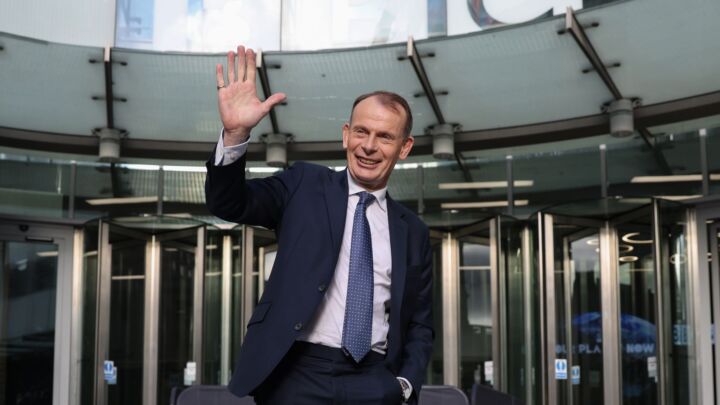
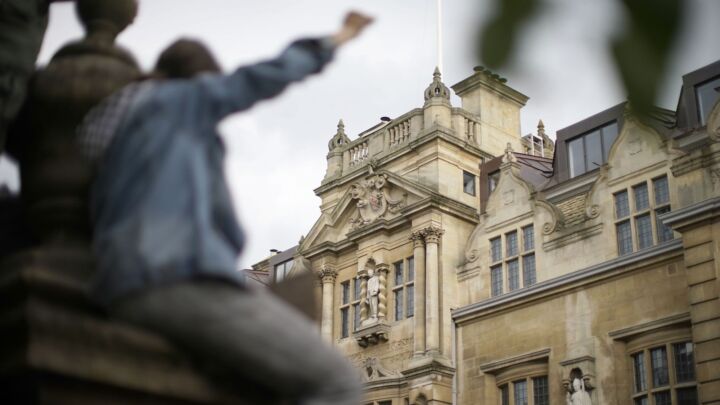


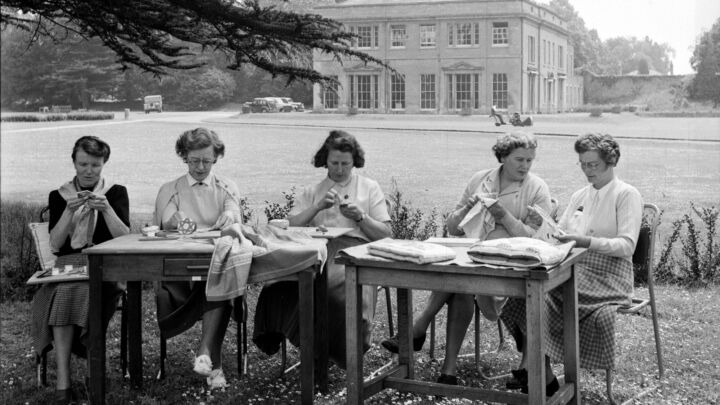
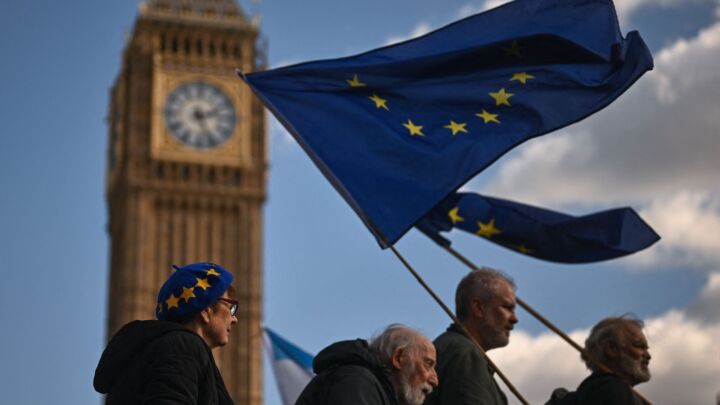
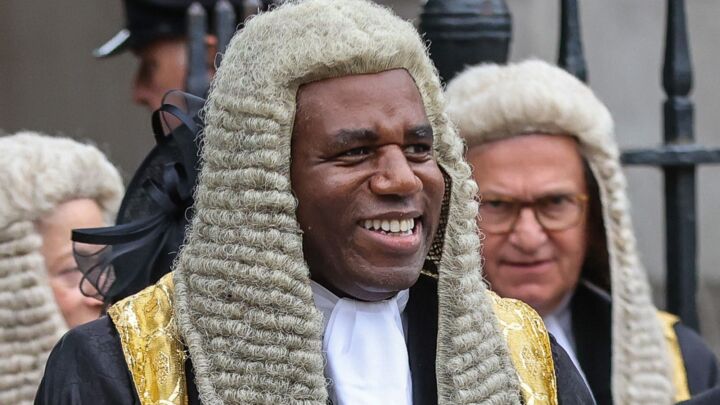


Comments
Want to join the conversation?
Only spiked supporters and patrons, who donate regularly to us, can comment on our articles.